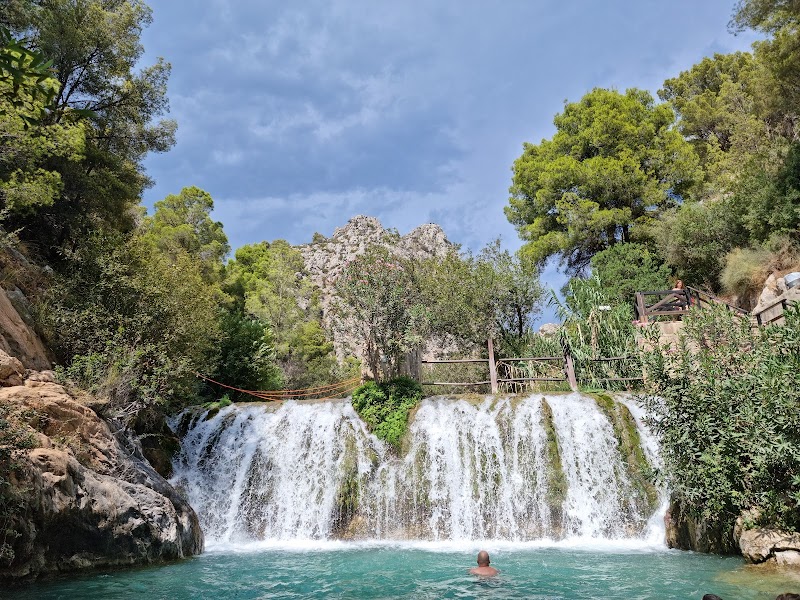Exploring Scuba Diving Near Javea: Your Guide to Underwater Adventure in Alicante
Discover the vibrant underwater world just off Javea’s coast, where clear waters and diverse dive sites provide unforgettable scuba experiences. Explore practical tips and expert insights that prepare you for the best diving adventure in Alicante.
Book Dive Sessions in Advance
Reserve your scuba tours with local dive shops ahead of time, especially during peak seasons, to secure spots and equipment.
Use Reef-Safe Sunscreen
Protect yourself and the marine environment by applying sunscreen free of harmful chemicals before diving or snorkeling.
Check Weather and Sea Conditions Daily
Currents can shift rapidly, so confirm local forecasts to avoid challenging or unsafe diving conditions.
Stay Hydrated Before Diving
Drink plenty of water to avoid dehydration, which can be aggravated by saltwater exposure and physical exertion underwater.
Exploring Scuba Diving Near Javea: Your Guide to Underwater Adventure in Alicante
Scuba Near Javea: Dive Into Alicante’s Underwater Realm
Javea, perched along Alicante’s sunlit coastline, offers some of the Mediterranean's most thrilling scuba diving experiences. Beneath its clear blue waters, a landscape of rugged reefs, vibrant marine life, and intriguing wrecks invites divers of all levels to explore. Whether you’re a first-timer or a seasoned diver, Javea’s dive spots serve adventure with a practical edge, ensuring every plunge is safe, exciting, and memorable.
The town’s dive centers specialize in guided tours, equipment rental, and certification courses that fit your skill and schedule. Visibility near Javea regularly tops 15 meters, with water temperatures that range from a refreshing 18°C in spring to a comfortable 26°C in summer—perfect for extended dives. Key dive sites like La Nao Cave and Barranco del Migdia challenge divers with tunnels and walls alive with octopus, groupers, and anemones. Wreck diving enthusiasts should seek the wreck of the Castillo de San Carlos, where history rests silently below the waves.
Practical advice for diving near Javea includes early booking with local dive shops, packing reef-safe sunscreen, and monitoring weather and sea conditions. The diverse underwater terrain caters to both recreational and technical diving, with clear markers for depth and currents. Dive seasons peak between May and October, but winter offers peaceful solitude and unique wildlife sightings.
Essential SEO Keywords Explored
“Scuba diving Javea” leads divers to numerous professional dive operations ready to equip and guide visitors. Terms like “Javea dive sites,” “Alicante scuba excursions,” and “Mediterranean wreck dives near Javea” highlight the region’s varied underwater attractions. Keywords such as “certified scuba courses Javea,” “snorkeling and scuba Alicante,” and “dive boat tours Javea” emphasize the full spectrum of aquatic activities available. Combining these keywords with local references helps adventurers locate reliable services and plan their dives effectively, ensuring readiness for currents, marine environments, and safety standards.
Nearby Trips & Excursions
When not underwater, Javea offers outdoor adventures just a short trip away. Hike the Montgó Natural Park for panoramic views of the sea and coastline, cycle through the scenic Cap de la Nau peninsula, or try kayaking around the coves and cliffs near Granadella Beach. Each outdoor activity complements your scuba trip by immersing you further in Alicante’s natural bounty.
Nearby Trips
All Adventures
Boat Charters
Water Activities
Adventures near Denia
Discover the unique and memorable adventures that make Denia special.
Frequently Asked Questions
What are the best scuba dive sites around Javea?
Popular dive sites include La Nao Cave, known for its underwater tunnels and diverse marine species, and the wreck of Castillo de San Carlos, which offers an intriguing historical underwater exploration.
Do I need a scuba certification to dive near Javea?
Yes, most dive centers require at least an Open Water certification for independent dives. Beginner courses and guided dives for novices are available through local operators.
How strong are the currents near the dive sites around Javea?
Currents vary by location and season but are generally manageable. Dive operators provide thorough briefings, and some dive spots like Barranco del Migdia have stronger currents suited to more experienced divers.
Are there opportunities for snorkeling as well as scuba diving?
Absolutely. Many dive centers offer combined snorkeling excursions, especially in shallow coves with crystal-clear waters, ideal for less experienced water explorers.
What marine wildlife can I expect to see while diving near Javea?
Expect to encounter octopus, groupers, moray eels, various nudibranch species, and occasionally dolphins near the coast. Protected underwater reserves help support these populations.
Is underwater photography permitted at Javea’s dive sites?
Yes, underwater photography is allowed and encouraged. Divers should ensure their equipment is properly certified and avoid disturbing wildlife or damaging reefs.
Recommended Gear
Wetsuit (5mm or thicker in cooler seasons)
Protects against cold water and potential scrapes when exploring rocky underwater terrain.
Dive Computer
Helps monitor depth, bottom time, and decompression limits for safe diving.
Underwater Torch
Useful for exploring dim caves and wrecks, especially in low light conditions.
Surface Marker Buoy (SMB)
Enhances diver safety by signaling your presence to boats during ascent or surface swims.
Local Insights
Hidden Gems
- "The submarine caves accessible only during calm seas near Cabo de San Antonio"
- "Small, quiet beaches like Cala Sardinera ideal after diving"
Wildlife
- "Temporary mola mola (sunfish) sightings in late summer"
- "Autumn migration of sardines along the coast"
History
"The Castillo de San Carlos wreck reflects the area's maritime defense history dating back to the 18th century, making it both a dive and historical site."
